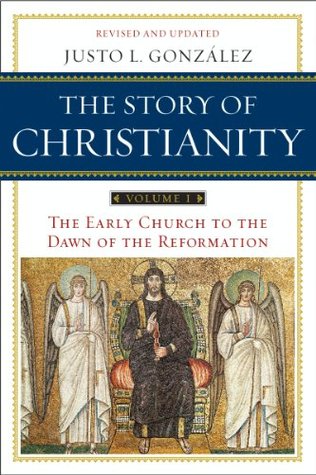More on this book
Community
Kindle Notes & Highlights
Read between
August 11 - October 9, 2017
many were established on marginal lands that were brought into production by the labor of the monks.
in a society where the wealthy considered manual labor demeaning, the monasteries showed that the highest intellectual and spiritual achievements could be coupled with hard physical labor.
With the support of the papacy, the Benedictine Rule spread throughout the Western church.
The second institution which, jointly with monasticism, gave unity and continuity to the Middle Ages was the papacy.
The origins of episcopacy in Rome are not altogether clear.
during the early centuries the numerical strength of Christianity was in the Greek-speaking East, and that churches such as Antioch and Alexandria were much more important than the one in Rome.
It was the Germanic invasions that brought about the great upsurge in the pope’s authority.
in the West the church became the guardian of what was left of ancient civilization, as well as of order and justice.
Leo’s opinion was not generally accepted simply because he was the bishop of Rome, and that it took a politically propitious moment for his views to prevail.
It was only when more favorable emperors came to power that Leo’s positions were more generally accepted.
these episodes—and others like it—gave Leo great authority in the city of Rome.
in Leo’s writings one finds all the traditional arguments that would repeatedly be mustered in favor of papal authority.
By 498, these tensions resulted in the existence of two rival popes, one supported by the Ostrogoths and the other by Constantinople.
The next pope, Gregory, was one of the ablest men ever to occupy that position.
the Rome that Gregory knew was a far cry from the ancient glory of the empire.
Gregory himself had no wish to become pope, but the clergy and the people elected him.
Gregory then set about his new tasks with unbounded zeal.
Thus, by default, the pope was acting as ruler of Rome and the surrounding area, which soon came to be known as “Saint Peter’s Patrimony.”
Gregory considered himself above all a religious leader.
as bishop of Rome, Gregory saw himself as patriarch of the West.
He was also a prolific writer whose works were very influential throughout the Middle Ages.
By making Augustine an infallible teacher, he contradicted the spirit of that teacher, whose genius was, at least in part, in his inquiring spirit and venturesome mind.
Gregory readily accepted the stories circulating at his time as if they were simple and direct confirmation of the Christian faith.
Constantinople insisted on asserting its authority over Rome.
the election of a pope had to be confirmed by the authorities in Constantinople before the candidate could be consecrated as bishop of Rome.
Out of Arabia, a forgotten corner of the world that had been generally ignored by both the Roman and the Persian Empires, a tidal wave of conquest arose that threatened to engulf the world.
Muhammad claimed that he was not preaching a new religion, but simply the culmination of what God had revealed in the Hebrew prophets and in Jesus, who was a great prophet, although not divine as Christians claimed.
The first is radical monotheism,
The second is ritual prayer,
The third is zakat,
The fourth pillar is fasting during the month of Ramadan,
the fifth pillar is pilgrimage to Mecca or hajj,
The struggle between the fourth caliph, Ali (Ali ibn Abi Talib, 656-661), and his rivals resulted in a great division that would continue to persist through the centuries: the Shiites supporting Ali, and the Sunni his rivals.
Even while torn asunder by inner conflict, however, Islam continued to advance.
This enormous expansion was made possible by disaffection among those who had been subjected to the Byzantine and Persian empires.
the general promised that Jews and Christians would be respected in their property and their customs,
many of the ancient centers of Christianity—Jerusalem, Antioch, Damascus, Alexandria, and Carthage—were now under Muslim rule.
at times any defense of Christianity was considered an offense against Muhammad, punishable by death.
was pushed back to what is now Turkey, and to its holdings in Europe.
Until then, Christianity had developed along the Mediterranean basin. Now, it would find its center along an axis that ran from north to south, including the British Isles, the Frankish kingdom, and Italy.
the Muslim invasions, and Christian reaction to them, continued and accelerated a process of militarizing Christianity that had long been developing.
The Germanic peoples were assimilated, and in the process the church came to adopt many of their traditional warlike customs.
Thus was created an atmosphere of violence and suspicion that would continue to bear its bitter fruit half a millennium later.
For Christians at that time, both East and West, the church was one.
the political course of events produced entirely different situations in the two branches of the church.
Given that power, many emperors made theological decisions on the basis of political considerations, which led to even greater acrimony.
Foremost among these was the question of how divinity and humanity are joined in Jesus Christ.
The question then was, how could the immutable, eternal God be joined to a mutable, historical man?
The Alexandrines, like Clement and Origen centuries earlier, stressed the significance of Jesus as the teacher of divine truth.
The Antiochenes, on the other hand, felt that for Jesus to be the Savior of human beings he had to be fully human.


